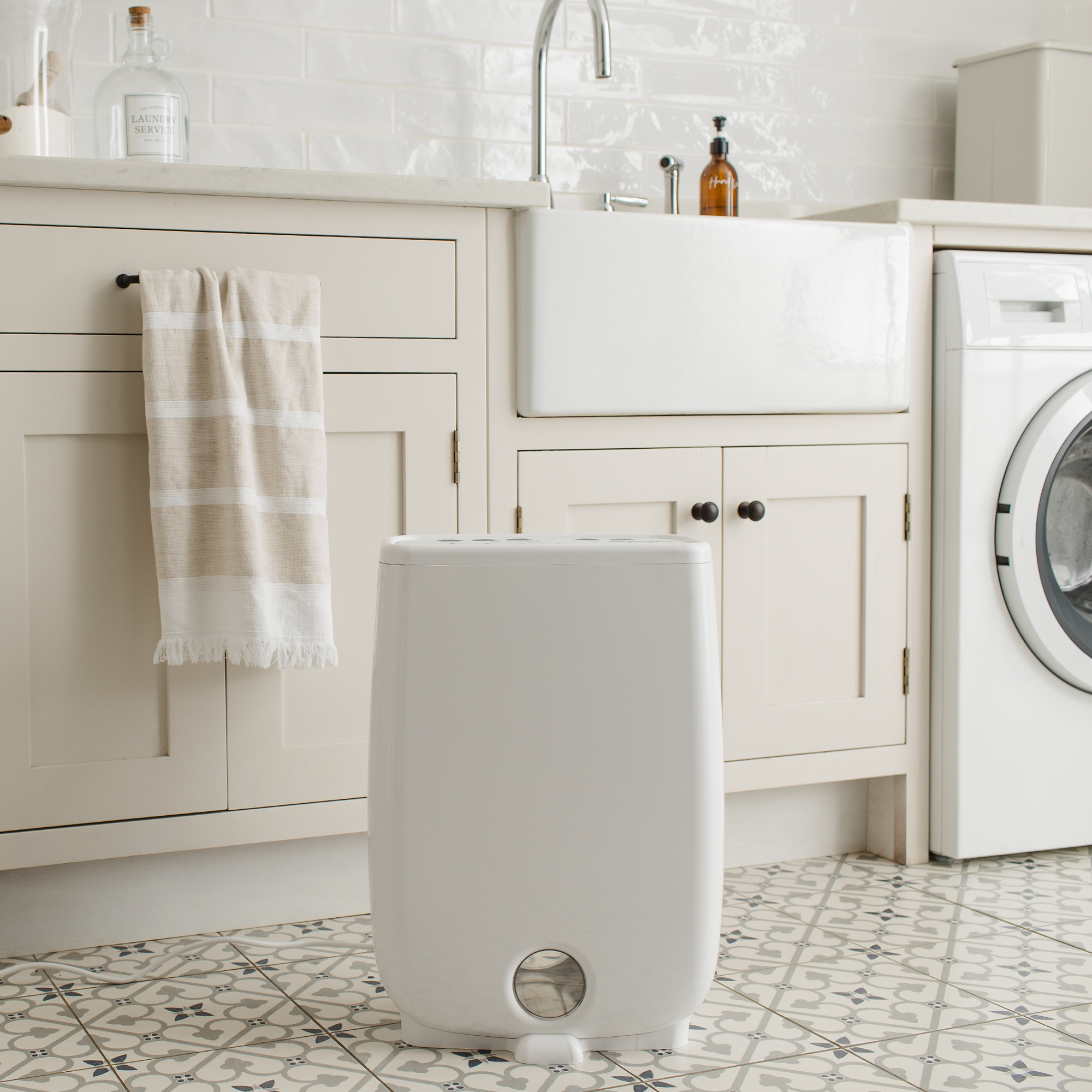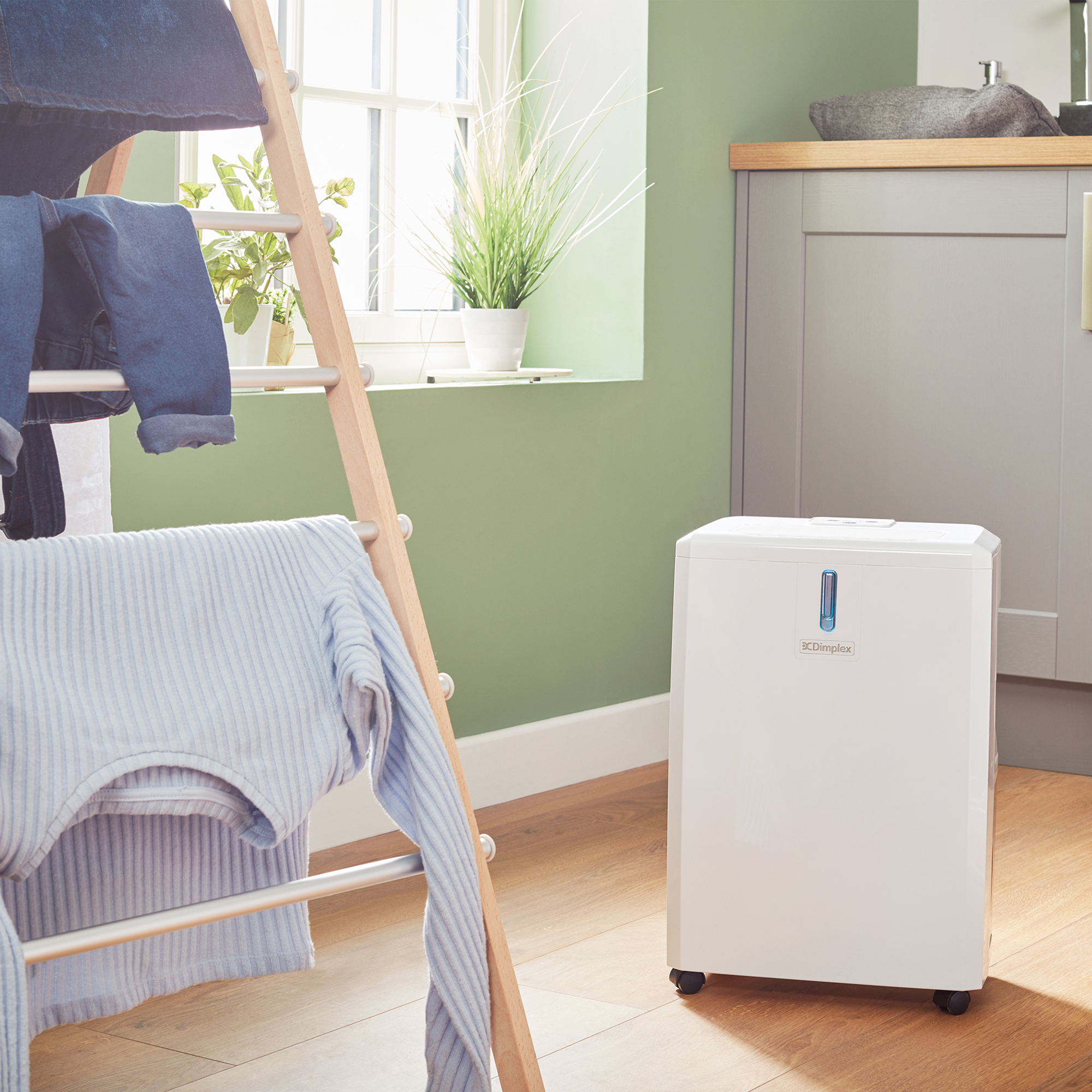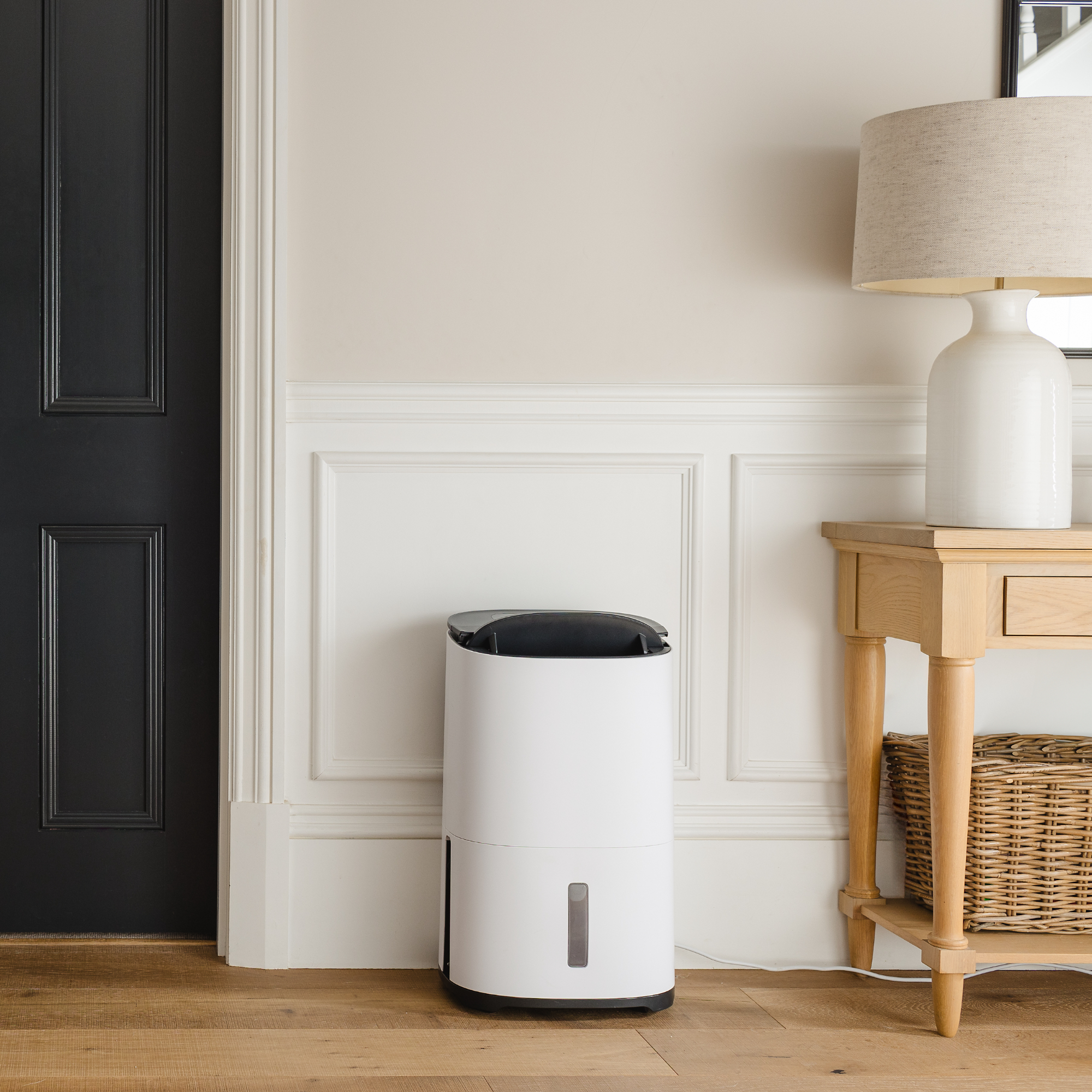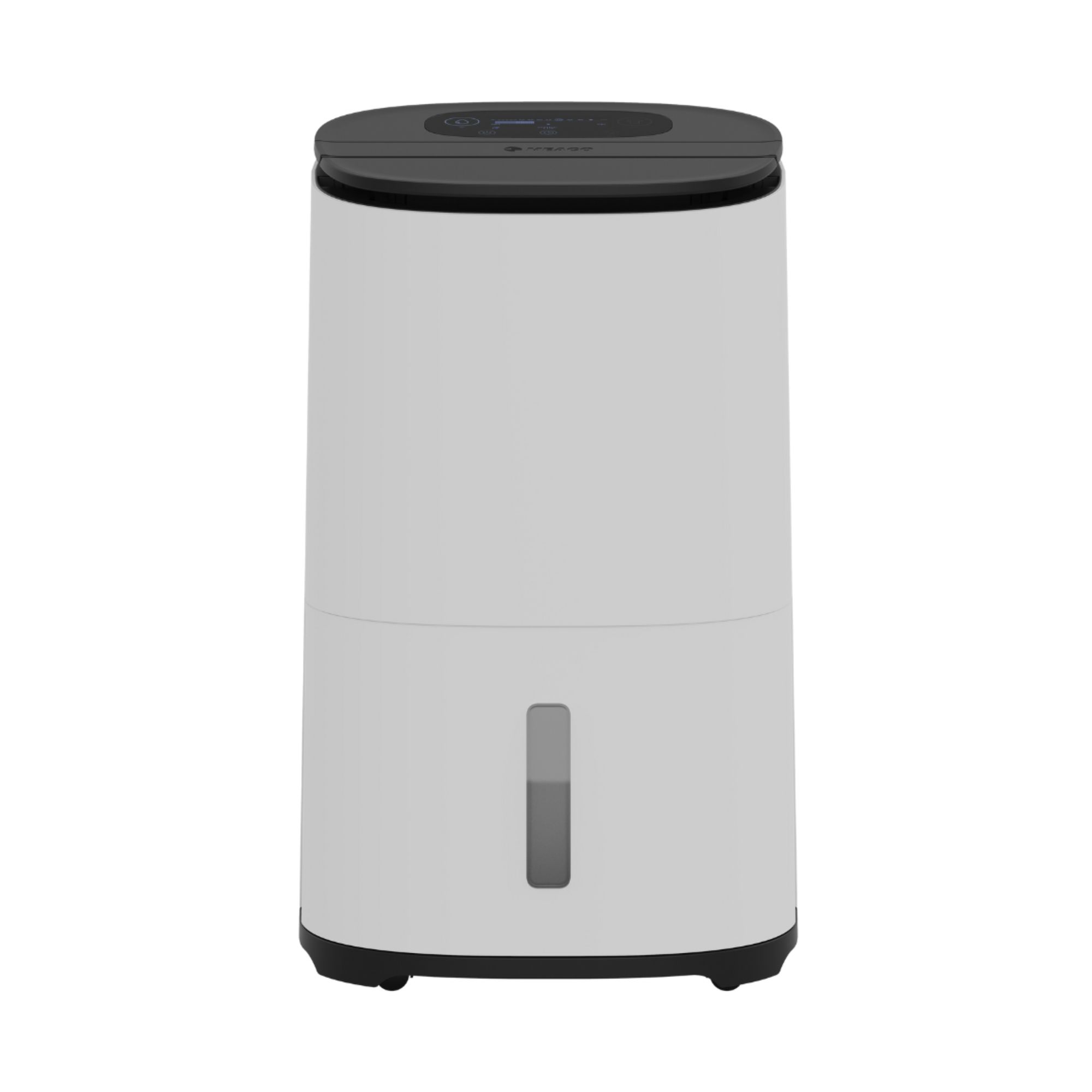How many dehumidifiers do I need to beat damp and condensation? I asked the experts what the perfect dehumidifier setup is for every type of home
It's not just about how many you buy, but where and how you use them


If you've ever found yourself wondering why your dehumidifier isn't quite keeping up, it's safe to say you're not alone.
When I first got hold of one of the best dehumidifiers to test, I assumed it would cover my entire house, only to find that my windows were still dripping in the morning. It turns out there's a bit more science behind it than simply switching one on and hoping for the best.
The truth is, how many dehumidifiers you need really depends on your home. Its size, layout and how damp it gets. And even then, correct usage plays a huge role, where you position your dehumidifier and how you ventilate can make all the difference.

According to the experts I spoke to, the key isn't always buying a more powerful model, as this is one of the biggest dehumidifier buying mistakes, but using the dehumidifier you choose in the most efficient way possible.
From understanding the humidity levels to knowing which rooms to target, these are the factors that determine how many dehumidifiers you really need and how to use them to keep damp and condensation at bay all winter long.
1. The size and shape of your home
It sounds obvious, but your home's size makes a huge difference. A single 10 - 12L dehumidifier, like the Meaco Arete Two 10L, £179, at Amazon, can usually handle a room of around 20m2 (around the size of a small bedroom), but anything bigger will need support.
'For smaller apartments or one to two-bedroom homes, one smaller capacity dehumidifier is usually sufficient, particularly if placed in an open-plan living space or hallway to allow air to circulate,' explains Olivia Xu, Chief Marketing Officer at DREO.
Sign up to our newsletter for style inspiration, real homes, project and garden advice and shopping know-how
'You’ll usually need one well-sized unit for a normally heated home,' agrees Chris Michael, Chair at Meaco. He shares an overview of what size dehumidifier you might need for the size of your home.
- 1-bed house/flat A 10L dehumidifier like the is suitable
- 2-bed house/flat A 12 dehumidifier is best suited
- 3-bed house: A 20L would be the best fit for a occupied home
- Large 4–5-bed home: 25L will do the job
However, Olivia told me that a second unit (or a higher capacity model) may be needed if you regularly dry clothes indoors (especially in winter months), or there are signs of dampness.
'A modern dehumidifier with a rated extraction capacity of 15–25 litres per day should manage an average three-bed home when used in this way,' she explains.
And in larger properties with four or more bedrooms, Olivia says, 'it’s often worth investing in a higher-capacity model (around 20L per day) or running two dehumidifiers - for instance, one on each floor - to ensure even moisture control throughout the home.'
Nicholas adds that 'Older homes, north-facing rooms, or properties with poor insulation will often have higher humidity levels, especially in winter. This means that they'll need either more dehumidifiers or dehumidifiers with a bigger capacity.'
And the same goes for homes that are well insulated, well sealed and energy efficient can also likely trap moisture indoors if there isn't enough frequent ventilation.

Chris founded leading dehumidifier manufacturer Meaco and has been advising on humidity solutions and dehumidifiers since 1991 and is well-known within the dehumidifier industry across the world as a leader in innovation and sustainability. With a wealth of experience in the industry, Chris is committed to helping provide low-energy and low-noise solutions appliances that improve the lives of customers.
2. How damp your home actually is
The severity of your damp and condensation problem matters as much as the space itself. If your main issue is condensation on windows, a single well-placed unit may be enough. But if you're noticing damp patches, mould spores or a clammy feeling in multiple rooms, two or more units will give you more consistent results.
Olivia agrees, 'If condensation or mould appears, an additional unit or higher-capacity model can help bring humidity back to healthy levels.'
Nicholas adds that 'if you notice damp or condensation in multiple rooms that are far apart, then it’s always better to use one dehumidifier in each area rather than relying on a single unit. Having the dehumidifier in the exact problem location is key.'

Nicholas Auckland is a heating, cooling and energy expert with over 20 years of experience in the industry, as well as the Managing Director of Trade Radiators.
Nicholas is dedicated to finding the best heating and cooling solutions for every need, as well as optimising energy usage, reducing costs and helping others live with lower-cost energy bills.
Nicholas has become a trusted leader in the industry, frequently collaborating with the media and other partners to assist with cost-of-living issues and other home-related problems.
You're aiming to keep indoor humidity around 50%-55%, says Chris. 'If the relative humidity (RH) is significantly higher than 55%, buy a larger dehumidifier than the sizing suggests,' he explains.
Some experts suggest monitoring humidity with a simple hygrometer, which is super useful and also won't break the bank. This ThermoPro TP49 small digital hygrometer, £8.99 at Amazon, is a great choice.
Chris adds that you can 'set the humidity and leave the dehumidifier to work towards that figure. It'll turn off when it's done, only turning on again if it detects a humidity increase.'
3. How you use your space

I realised drying our clothes indoors was making our humidity spike, especially in recent months when I couldn't hang any washing outside. Having one dehumidifier positioned near the airer and another upstairs overnight made a huge difference.
And Olivia agrees, 'a single load of washing can release 2–5 litres of moisture into the air, which can overwhelm a smaller, less powerful unit. Households that regularly air-dry clothes indoors should consider a larger-capacity model (try the Pro Breeze 30L High Capacity Smart Dehumidifier, £229.99, at Amazon) or a second dehumidifier placed near the drying area.'
Chris adds, 'For drying clothes, close the door and select laundry mode. Use a cooling fan alongside the dehumidifier, it will halve the drying time while costing less than 1p an hour to run.'
And for specific problem areas like unheated rooms, 'such as conservatories, utility or cellars, use a desiccant type dehumidifier like the Meaco DD8L, £259.99 at Meaco, suited to colder spaces and emits heat, helping to warm up cold rooms. Perfect for drying washing in a utility room.'
Chris also adds that isolated or persistently damp rooms may need their own unit.
4. Energy use and efficiency

Running multiple dehumidifiers sounds costly, but it doesn't have to be. Most models only cost around 6p - 12p per hour to run, and more energy-efficient units automatically switch off once humidity levels are balanced.
Chris also adds that the extraction rate, energy efficiency, running costs and warranty length are also things to take into account. 'It’s a false economy to buy a cheap, noisy dehumidifier that costs twice as much to run and needs replacing after a year.'
'Choosing a quiet, energy-efficient model will save hundreds of pounds over its lifetime whilst being easier for the household to live with.'
The best dehumidifiers we've tested

Meaco's Arete Two takes the top spot in our guide, and what I love so much about it is that it comes in different sizes, up to a 25L model to suit medium-sized rooms. It also doubles up as an air purifier.

This 12L dehumidifier is perfect for smaller rooms, and it's also super affordable. It's quiet, portable, and has a built-in carbon filter to remove odours as well as moisture.

One of the best high-capacity dehumidifiers on the market, this model can extract up to 30L of moisture from the air per day. It also boasts Wi-Fi connectivity and voice-activated controls.
FAQs
How can you tell if you need more dehumidifiers?
I asked the heating and energy expert at Trade Radiator, Nicholas Auckland, how to tell if you need more dehumidifiers in your home:
- 'The dehumidifiers are filling up very quickly. This means that their capacity isn't big enough.
- The humidity levels in your home aren't going down, and are consistently around 60%. This means that you need more dehumidifiers in order to control the high levels.
- There's still a lot of condensation forming on your windows, walls, or other surfaces. This means that you don't have enough dehumidifiers for the amount of moisture in the air.
- There'll likely be a couple of problem areas where you'll notice the above. You should introduce a dehumidifier to these areas, and that should be effective in reducing humidity levels and preventing condensation.'
Is it possible to have too many?
It actually is, according to Nicholas Auckland from Trade Radiators. 'Unless you have your dehumidifier set to switch off when humidity levels reach a certain humidity level, then they can dry out the air. You should never let indoor humidity levels fall below 40%, so if you have the option it's a good idea to set your dehumidifiers to switch off once they hit this.'
'Drying out the air too much has the potential to lead to dried out skin, irritated sinuses, and can even cause wood furniture or flooring to crack over time.'
In the end, the right number of dehumidifiers isn't a hard rule. It's a balance between your home's needs and how you use the space. If condensation keeps coming back, it's a sign that it might need a helping hand, whether that's a second unit upstairs, more consistent use or better positioning.

Jenny is Senior Digital Editor and joined the team in 2021, working across Ideal Home, Real Homes, Homes & Gardens, Livingetc and Gardeningetc. Since getting on the property ladder, her passion for interior design and gardening has taken on a new lease of life. She loves collecting and salvaging unique items (much to her other half's despair) but sniffing out stylish home bargains is her one true love.